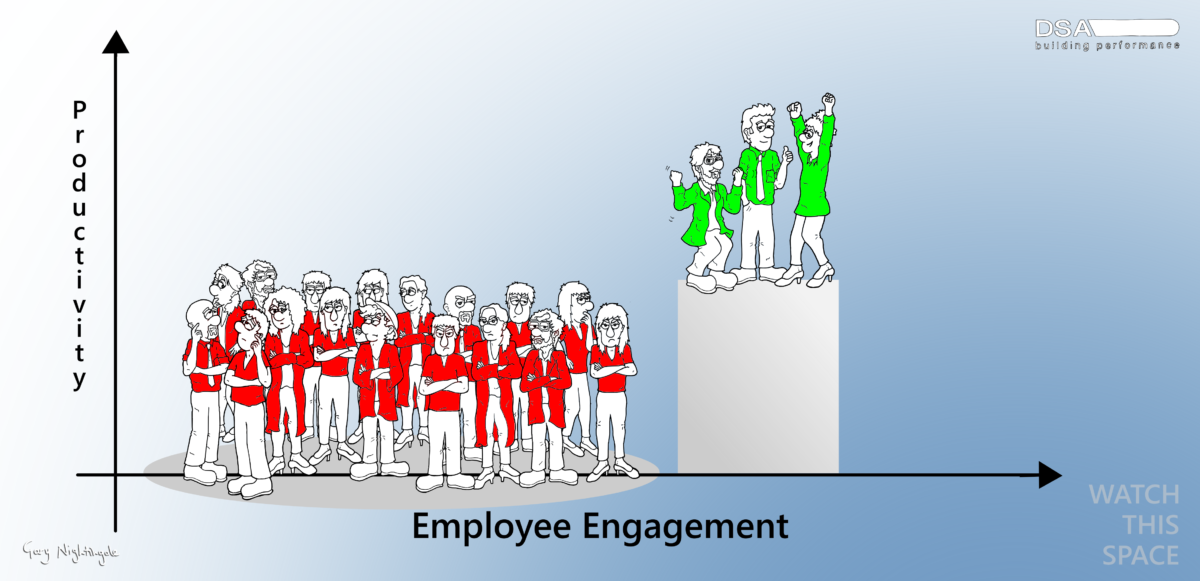The high cost of unhappiness

For many years I’ve known that companies with engaged, happy workforces perform better than companies with disengaged, unhappy workforces.
When people feel glad and proud to be part of something, they go the extra mile.
They look after and help each other.
When they spot problems, they take responsibility for fixing them, or at least they make sure the right person is aware.
They don’t shrug their shoulders and say, “Not my problem.”
This is why I and others are working on a plan to equip young construction professionals, at scale, with workplace coaching skills, because coaching techniques can be used by anyone to foster engaged, bonded, motivated – happy – teams.
The numbers don’t lie
I know this because it’s common sense.
Moving up the evidential scale, I know this because I see it happen among the project and company leadership teams I coach.
Now, though, I can do better than gut feel and anecdote, because this month I was extremely gratified to see that my view is shared by the global polling and analytics giant, Gallup, whose huge datasets put the matter beyond doubt.
Gallup takes employee engagement very seriously. This month, it released the results of its latest, annual Q12 study.
It’s the world’s largest such study, probing more than 112,000 teams and business units, encompassing 2.7 million people in 96 countries, across many sectors, including construction.
The aim is to gauge levels of staff engagement against the most important business performance indicators, including profitability, productivity, quality, customer satisfaction and safety.
I can’t give you the numbers, because the study and its results are the property of Gallup, which they share with customers.
But I don’t think they’d mind me telling you that businesses with the highest employee engagement enjoy substantially better results in all performance indicators than those with the lowest employee engagement.
Don’t cut costs. Boost engagement instead
Companies are naturally looking to cut costs as the pandemic hurts the economy.
But Gallup thinks employee engagement is so critical for business success that it is warning them not to cut anything that would harm employee engagement.
And they go further than that.
They calculate that productivity among highly engaged teams is 14% higher than that of teams with the lowest engagement.
On the flip side, they say unengaged employees cost their company the equivalent of 18% of their annual salaries.
So, they say that instead of cutting costs, companies should look at boosting engagement to improve the bottom line!
“Turn managers into high-performance coaches”
The sad news is that, all over the world, employee engagement is very low.
In 2017, a Gallup global poll found that, of the world’s one billion full-time workers, just 15% are engaged at work.
That means 85% are not engaged!
The figure changes country to country, but it’s shockingly low in most places.
Gallup boss Jim Clifton went so far as to say that workplace unhappiness is the reason why global GDP per capita has been in general decline for decades.
Like me, Jim’s main concern is for Millennials, those born between 1980 and 1996, the oldest of whom are turning 40.
Studies show this generation is hungry for meaning and purpose in work; unlike us Baby Boomers, they’re not satisfied with just having a job for the cash.
You can imagine my amazement when Jim said what he thought the antidote was: coaching!
“[O]ur conclusion,” he said, “is that organisations should change from having command-and-control managers to high-performance coaches.”
Managers, he said, must be trained to hold “high-development conversations”, instead of just monitoring compliance.
Wow, thanks, Jim! That’s just what we’re going to do!
